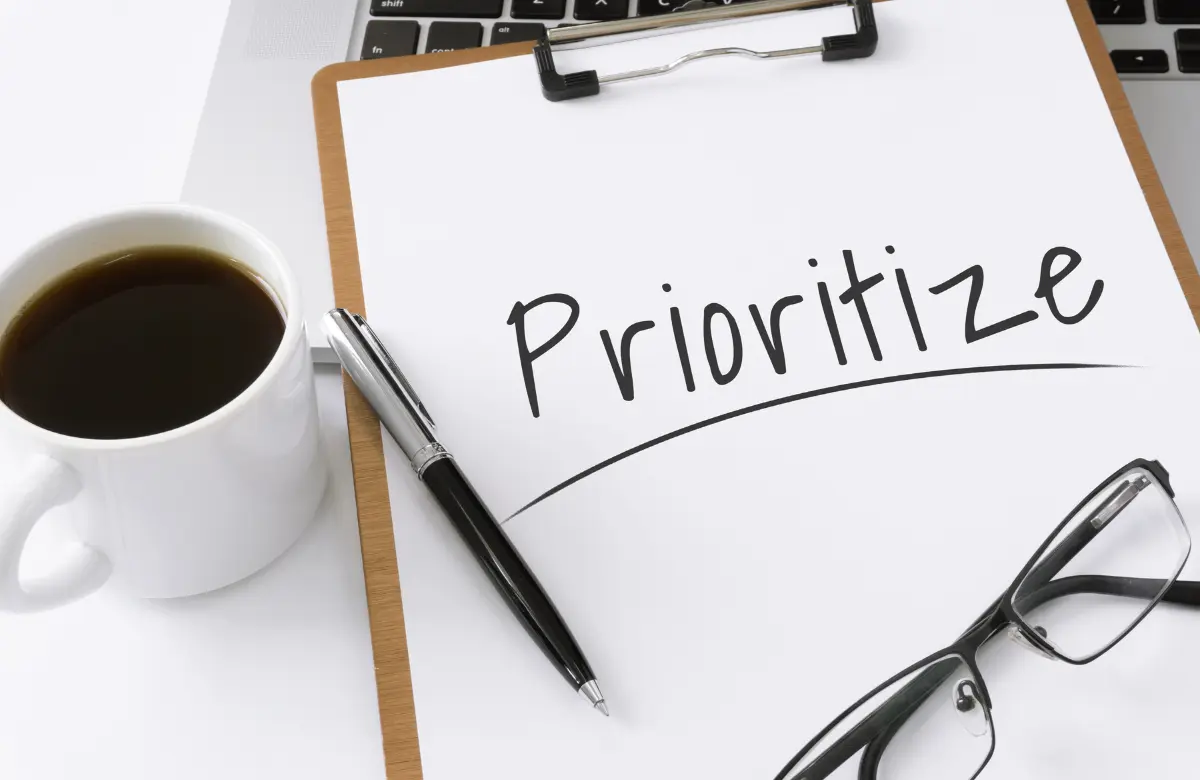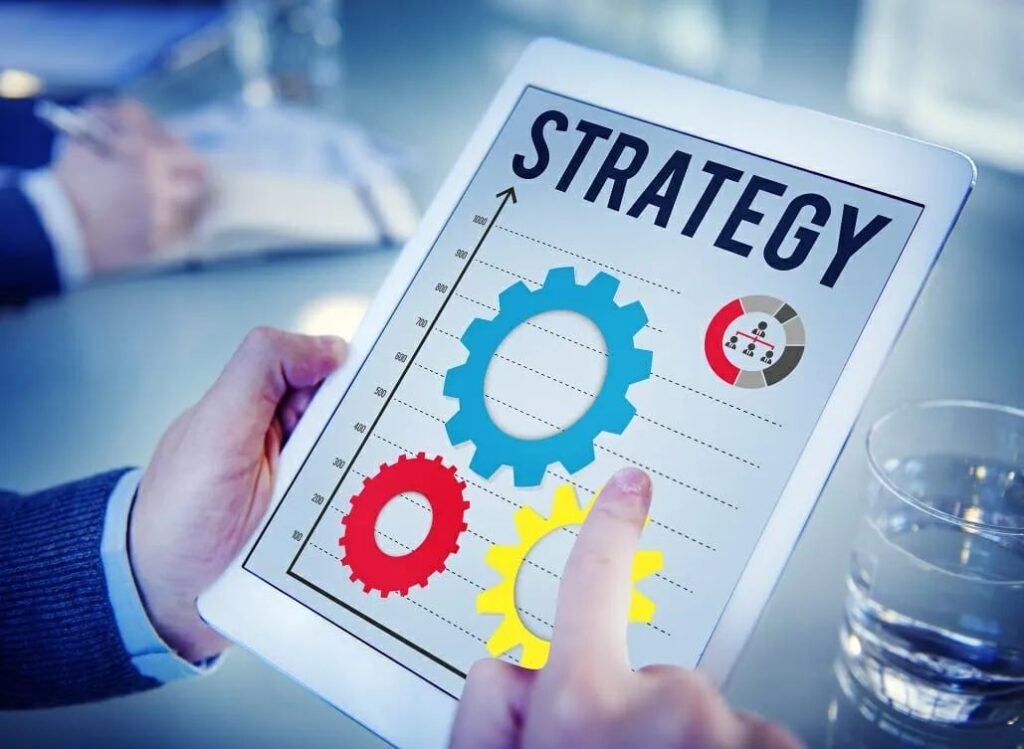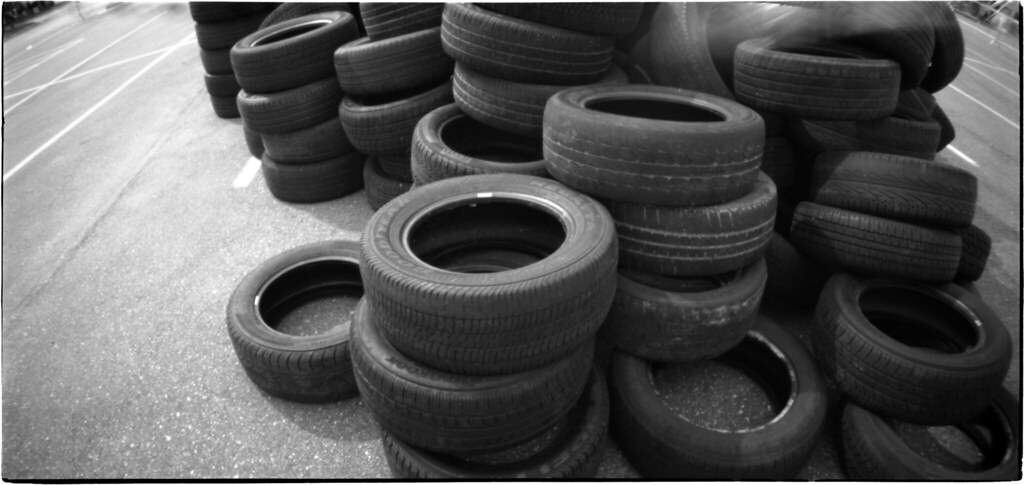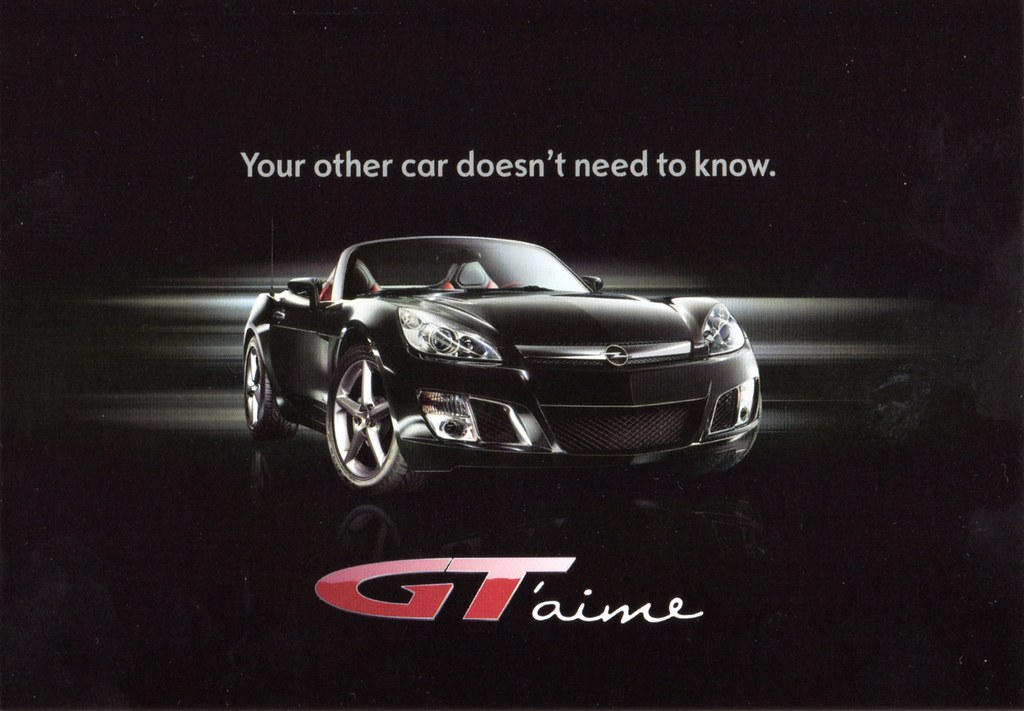
The world today feels like it’s spinning faster than ever, doesn’t it? One minute everything’s humming along, the next, a global pandemic hits, supply chains seize up, or geopolitical tensions rewrite the rules of trade. For businesses, especially giants like those in the global automotive industry, these aren’t just minor bumps in the road; they’re profound, existential challenges that demand more than just quick fixes. They require a complete overhaul of how we think about risk and survival.
We’ve all heard about crisis management – the frantic, often reactive, scramble when disaster strikes. It’s about trying to keep things from falling apart in the moment. But what if there was a more proactive way to not just react, but to anticipate, adapt, and even thrive amidst the chaos? That’s where strategic resilience comes in, moving beyond just managing a crisis to designing your entire business to withstand shocks before they even happen. It’s about transforming potential setbacks into unparalleled opportunities to outpace the competition.
The auto industry, a sector that has faced everything from debilitating chip shortages and supply chain bottlenecks to abrupt shifts in consumer demand and transformative technological trends like electrification and autonomous driving, offers a treasure trove of invaluable insights. Their ongoing journey from reactive crisis management to proactive resilience building provides critical lessons for any organization navigating today’s intensely unpredictable landscape. So, let’s dive into 12 essential lessons that can help you not just survive, but truly flourish, no matter what tomorrow brings.

1. **Reconfigure Supply Chains for Local Resilience**One of the clearest and most painful lessons emerging from recent global disruptions, such as the COVID-19 pandemic and escalating geopolitical tensions, is the inherent vulnerability woven into long, globally dispersed supply chains. Companies that had meticulously optimized for cost efficiencies by sourcing components and materials from distant locations suddenly found themselves utterly stuck, grappling with indefinite delays or complete stoppages of shipments that simply couldn’t get through. This stark reality sparked a fundamental and urgent rethinking in how goods and critical materials move across the world.
The smartest players in the automotive industry quickly recognized that an overreliance on extensive global networks, while seemingly cost-effective in calmer times, was simply too risky in a volatile environment. Instead of solely chasing the lowest unit cost across vast oceans and multiple borders, they began to strategically build and strengthen supplier networks much closer to home. This crucial shift wasn’t merely about geographical proximity; it was about strategically creating faster response times, significantly reducing transit distances, and inherently lessening their vulnerability to sudden global shocks, unforeseen trade barriers, or localized conflicts.
By moving supply chains closer to home, these forward-thinking automakers gained a decisive competitive advantage. While many of their competitors were grappling with frozen logistics, depleted inventories, and stalled production lines, these resilient companies managed to keep their operations moving, or at least minimize their downtime significantly. This approach signaled an evolution from a traditional, cost-focused supply chain strategy towards a far more flexible and trade-resilient production and distribution network, even if it meant adjusting previous assumptions about globalized cost advantages.
Striking the right balance between building local resilience and maintaining scale efficiency became an absolute imperative. Volkswagen Group risk leader Torben Oeder succinctly highlighted this, stating that rising geopolitical tensions and trade barriers force automakers to rethink and make supply chains more flexible. He emphasized the challenge of finding alternatives for materials and production while balancing it with the risk of losing cost advantages of large-scale operations. This proactive approach to supply chain redesign is critical for staying competitive in a fragmented global economy.

2. **Embrace Flexible Production Models**Traditional production lines, which were initially designed for rigid mass production and optimized for maximum efficiency in stable market environments, proved to be a significant liability when consumer demand shifted abruptly or critical components became unexpectedly scarce. If consumer preferences pivoted dramatically overnight, or if a single, vital part was delayed due to an external shock, these inflexible manufacturing systems would rapidly grind to a halt, leading to massive financial losses and squandered market opportunities. The automotive industry experienced this acutely with both sudden changes in demand patterns and persistent, unforeseen supply chain bottlenecks.
Resilient companies quickly understood that rigidity was the true adversary, far more so than inherent operational complexity. They embarked on a profound re-evaluation of their factory layouts and overall manufacturing processes, systematically moving away from static, dedicated lines towards more adaptable, modular, and inherently flexible systems. This paradigm shift meant designing facilities, equipment, and production workflows that could rapidly adjust to produce different vehicle models, seamlessly accommodate alternative components or materials, or even switch to entirely new product lines without requiring extensive retooling or incurring significant, time-consuming downtime.
This newfound production flexibility empowers automakers to dynamically adapt to today’s highly volatile environment—whether grappling with escalating geopolitical tensions, navigating new trade restrictions, responding to regional conflicts, or mitigating the impact of climate-related disasters. Instead of adhering to outdated plans where sales volume was dictated and cars were priced strictly according to available production capacity, they now actively explore and implement flexible production models. This inherent agility enables them to respond swiftly and effectively to rapidly changing market demands, ensuring they can sustain production and maintain market access even when traditional assumptions about global stability are thoroughly challenged.
The goal is to move from a supply chain strategy focused solely on minimizing costs in a global free-trade environment to one that plans for flexibility, incorporates additional redundancies (backup resources), and establishes strategic sourcing options for rare materials, components, and technology. This proactive planning allows for continuous operation despite unforeseen challenges, illustrating how adaptable production is a cornerstone of true organizational resilience.
Read more about: Navigating the Nuances: 10 Cars with the Most Reliable CVT Transmissions in 2025

3. **Leverage Data for Predictive Decision-Making**In an era defined by unprecedented uncertainty and rapid transformation, accurate forecasting has evolved from an aspiration for perfect predictions to a more practical goal of simply making fewer errors. The automotive industry, confronting abrupt changes in consumer demand and grappling with persistent supply chain issues, quickly learned that relying on intuition, historical averages, or outdated models was a perilous recipe for potential disaster. The sheer volume of data now available, encompassing everything from subtle market shifts and emerging supplier issues to broader macroeconomic trends, presented an unparalleled opportunity to gain a decisive and actionable competitive edge.
The top players in the industry responded by transforming their approach to information, building robust, real-time data pipelines that extended across their entire value chain. This wasn’t just about passively collecting vast amounts of raw information; it was about actively processing it, rigorously analyzing it, and intelligently turning it into precise, actionable insights that could inform quick, confident, and accurate decisions. By continuously monitoring a wide array of factors—including evolving regulatory changes, shifting consumer preferences, and critical geopolitical developments—leaders could much more easily identify when a particular scenario was becoming increasingly likely, thereby enabling them to generate more informed and timely responses.
Utilizing data as a strategic superpower means moving far beyond basic sensitivity analyses to proactively consider a much wider spectrum of realistic possibilities. This includes even those low-probability but potentially high-impact events that are often overlooked. As an example, Expedia’s Price Tracking feature, though from a different industry, perfectly illustrates this principle by using historical data to indicate the best time to book flights and sending automated price alerts. Similarly, in the auto industry, rigorous monitoring of potential supply chain risks—assessed by country exposure (both direct and indirect, including tier-one and tier-three suppliers) and dependence on single sources—allows for the proactive setting of targets and establishment of tracking mechanisms to manage these risks with greater efficacy.
This systematic approach to data analytics helps automakers assess each of their 25 to 30 core strategic risks, evaluating their potential impact, likelihood, and ways to limit fallout. This constant vigilance and data-driven foresight are crucial for guiding strategic decisions around major investments or significant changes to existing plans, highlighting three to four high-priority scenarios each quarter to maintain focus and agility.
Read more about: Your Ultimate Guide to Outsmarting Traffic: Advanced GPS Strategies to Reclaim Hours Weekly

4. **Cultivate an Adaptable and Cross-Functional Workforce**When major crises invariably hit, the immediate and often instinctual reaction for many companies is to implement cost-cutting measures, which frequently include reducing headcount or reinforcing highly specialized, siloed roles. However, the most resilient organizations within the automotive sector consciously adopted a fundamentally different and more enlightened approach. They deeply understood that their people represented their most valuable, indispensable asset and that, with the appropriate investment in development, their workforce could become a pivotal source of organizational flexibility and strength.
Instead of perpetuating rigid departmental silos and narrowly defined job descriptions, these forward-thinking companies concentrated their efforts on developing dynamic, cross-functional teams and assiduously fostering a pervasive culture of continuous learning, upskilling, and active adaptation. This strategic investment meant providing comprehensive training programs that enabled employees to acquire a broader and more diverse range of skills, thereby empowering them to seamlessly shift between roles and responsibilities as market conditions, technological advancements, or strategic priorities rapidly changed. A prime example in the automotive industry involves the complex integration of the more iterative and error-tolerant software engineering culture with the inherently safety-oriented traditional car manufacturing culture, which explicitly requires merging new technological skill sets within the organization.
An adaptable and highly skilled workforce actively mitigates the painful and often protracted cycles of hiring and firing that can severely deplete an organization’s invaluable institutional knowledge, erode employee morale, and incur significant costs. By intentionally training their people to be inherently flexible, companies can efficiently redeploy talent where it is most critically needed, ensuring that the entire organization can move with the necessary speed and agility demanded by today’s volatile markets. This proactive, ongoing investment in human capital not only substantially bolsters an organization’s overall resilience but also profoundly enhances its fundamental agility and responsiveness to unforeseen challenges and emerging opportunities alike.
Steffen Spreiter, Porsche Group risk leader, emphasized the importance of risk management evolving towards strategic risk management, requiring new skills in risk areas. This includes strategically thinking employees who can constructively participate in strategy projects and bring planning processes right through to new analytical tool sets. Such capability building is essential for a workforce that can dynamically support strategic resilience.

5. **Prioritize Customer Experience and Ecosystem Development**In a world where products, especially complex ones like automobiles, can swiftly become commoditized, the truly successful companies deeply understand that customers don’t merely purchase vehicles; they are investing in experiences, seeking comprehensive solutions, and desiring meaningful connections. The global automotive industry, presently confronting transformative technological shifts such as the widespread adoption of electrification and the ongoing development of autonomous driving, has acutely realized that rapidly changing customer expectations necessitate a profound paradigm shift from focusing solely on efficient vehicle production to cultivating holistic, enduring customer engagement.
The top players in the auto sector have consciously moved beyond the transactional act of simply selling cars to strategically creating comprehensive, integrated ecosystems around their products. This forward-thinking approach encompasses a wide array of offerings, including the development of flexible subscription services for various vehicle features, providing seamless over-the-air updates for sophisticated vehicle software, and meticulously crafting seamless digital experiences that deeply integrate the car into every facet of the customer’s modern lifestyle. It’s an anticipatory strategy, focused not just on what customers explicitly need today, but more importantly, on what they implicitly desire and might value tomorrow, meticulously building services and solutions around those continuously evolving desires.
By rigorously prioritizing and enhancing the overall customer experience, these pioneering companies didn’t merely react to existing trends; they actively created and shaped them. They connected with consumers on a personal and empathetic level, providing practical insights and establishing a deeper, more resonant relationship that extends far beyond a single vehicle transaction. This customer-centric strategy is vital for ensuring long-term customer loyalty and helping companies maintain a competitive edge, as vividly evidenced by the declining demand for foreign cars in China, which starkly highlights the critical importance of profoundly understanding, adapting to, and catering to specific local customer preferences and dynamically shifting brand perceptions.
This emphasis on customer experience also drives innovation, as companies strive to integrate new business models and technologies, balancing them against potential economic and reputational risks. The goal is to build a brand that people can’t live without, rather than just one that is efficient, reinforcing the idea that focusing on customers builds inherent resilience.
Read more about: The Enduring Formula: 14 Reasons Why Toyota’s Proven Engine Designs Remain a Powerhouse in New Models

6. **Embed Resilience into Strategic Planning**Resilience, in the contemporary business lexicon, is far more than a mere buzzword; it represents a fundamental and pervasive shift in how organizations conceptualize and execute their long-term vision, manage their capital investments, and conduct their daily operations. For an extended period, strategic planning and risk management have regrettably often functioned as largely separate, siloed disciplines, with traditional risk functions primarily concentrating on more immediate operational processes and compliance. However, the current, relentlessly dynamic landscape—characterized by rapid technological advancements, escalating geopolitical tensions, profound supply chain upheavals, and abrupt changes in consumer demand—demands a much more integrated, cohesive, and agile approach.
Embedding resilience centrally within strategic planning means making it an explicit and non-negotiable aspect of every single strategic decision, from major investments in electric vehicle batteries or autonomous driving technology to global supply chain design. It fundamentally involves gaining a comprehensive understanding of where and precisely how uncertainties evolve across the myriad dimensions or areas of a company’s operations and then dynamically linking these crucial insights into an agile and responsive strategic-planning framework. Risk leaders from prominent organizations like Volkswagen Group and Porsche Group unequivocally emphasize that resilience and robust risk management are not independent but must intrinsically go hand in hand to effectively shape the future trajectory of the mobility industry.
This strategic integration ensures that a proactive preparedness for future uncertainties and an enhanced capability to anticipate disruptions significantly earlier become intrinsic to the very core of the business model. It fundamentally elevates risk management, shifting its focus from purely operational concerns towards a senior management-level imperative, thereby addressing critical strategic risk issues proactively and comprehensively. By making resilience a foundational and interwoven element of strategy, companies are far better equipped to navigate the inherent complexities and volatilities of today’s market, transform potential disruptions into distinct competitive opportunities, and ultimately secure a sustained, long-term competitive advantage.
As Torben Oeder notes, “It’s critical for staying competitive. Disruptive changes like AI, autonomous driving, and the shift to electric vehicles mean we must prepare for uncertainties and turn them into opportunities.” This perspective underscores that embedding resilience is not just about survival, but about actively seeking growth and advantage in an unpredictable world.
Read more about: The Layers of Protection: Unveiling the Security Measures and Controversies Around Oprah Winfrey’s Multi-Million Dollar Compounds

7. **Identify Broad, Long-Term Trends That Spawn Short-Term Chaos**It’s tempting to get caught up in the immediate fire drills, isn’t it? But truly resilient companies zoom out. They understand that while specific disruptions are tricky to predict, the overarching trends that *cause* them are often visible on the horizon. Think about what the World Economic Forum’s 2024 risk report highlights: major shifts in technology, the environment, geopolitics, and socioeconomics are constantly brewing, and they can unleash a whole host of immediate risks.
For the automotive industry, this means actively grappling with 25 to 30 core strategic risks. These aren’t just minor inconveniences; they’re huge factors affecting everything from market access and supply chains to long-term production stability. Leaders in this space are diving deep, assessing each risk for its potential impact, its likelihood, and, crucially, how to limit the fallout when it inevitably hits. It’s about knowing that geopolitical tensions, for example, can directly impact government policies, which then affect your access to technology – a clear sign of growing political protectionism and bargaining.
This forward-thinking approach also means keeping a close eye on demographic shifts, evolving energy transition policies, and changes in global economic growth. All these factors directly influence the demand for cars, especially the rapidly expanding EV market. By mapping how these big-picture strategic risks could directly impact their core organizational strategy, leaders can zero in on the most urgent scenarios.
This helps them prioritize and guide critical strategic decisions around major investments or significant changes to existing plans. It’s a game-changer from how things used to be. Automakers today aren’t just planning sales volumes based on static production capacity. Instead, they’re monitoring geopolitical developments, like trade restrictions, and setting up clear markers for when to adjust production. This proactive stance ensures they can maintain market access and keep supply chains flowing, often by exploring flexible production models that adapt quickly to shifting demands.

8. **Define Your Highest-Priority Resilience Dimensions**When a crisis hits, it rarely just affects one neat little corner of your business. A trade restriction, for instance, isn’t just about supply chains; it forces a much broader strategic response, rippling through your finances, operations, and even your brand’s reputation. That’s why simply focusing on fixing one problem in isolation isn’t enough for true resilience.
Most organizations are now thinking about resilience across six key categories: financial, operational, digital/technological, organizational, business, and reputational. Each of these categories, in turn, has its own unique set of risk dimensions, ranging from ensuring your day-to-day operations stay stable to maintaining your strategic competitiveness in the long run. It’s like having a multi-faceted shield, where each part needs to be strong.
Consider operational resilience in supply chains. Traditionally, the goal was just to keep specific parts and components moving. But today, the strategic challenge is much bigger: how do you design supply chains that can dynamically adapt to an incredibly volatile environment? We’re talking about everything from escalating geopolitical tensions and new trade restrictions to regional conflicts and climate-related disasters. The old focus on simply minimizing costs in a global free-trade world just doesn’t cut it anymore.
Instead, supply chain leaders are now planning for extreme flexibility, incorporating additional redundancies (think backup resources!), and establishing strategic sourcing options for those super rare materials, components, and crucial technologies. It’s about building in the wiggle room *before* you need it. A fascinating example in the auto industry is the challenge of blending the iterative, often error-tolerant culture of software engineering with the safety-first mindset of traditional car manufacturing. Companies need to figure out how to integrate these new technological skill sets and business models, a factor that managers often underestimate, while balancing economic and reputational risks from potential tech failures.

9. **Align Investments by Linking Uncertainties to Structural Resilience**Let’s be real: investing in resilience isn’t cheap, so you absolutely have to be smart about where you put your money. Prioritizing these investments is crucial, and the best way to do it is by aligning your resilience initiatives directly with the current and emerging risks your business faces. This means your quarterly agendas should regularly feature deep discussions about strategy and portfolio risks, ensuring every dollar spent contributes directly to strengthening your ability to withstand shocks.
For carmakers, this means meticulously managing new regulations and legal precedents, especially those tied to product liability as autonomous driving and AI technologies advance. It’s a delicate balancing act: how do you weigh the exciting potential benefits of being a first-mover against the very real legal and reputational risks of adopting these technologies early? Similarly, changes in environmental laws directly influence the energy transition and its pace, demanding strategic foresight.
To effectively link uncertainties with structural resilience factors, companies can take three powerful actions. First, dare to *imagine the future*! Go beyond those basic sensitivity analyses and really consider a much wider range of realistic possibilities. Yes, even those low-probability but high-impact events, like potential bans on combustion engines. By constantly monitoring regulatory changes, consumer trends, and geopolitical developments, you can identify when a scenario is becoming more likely and generate informed responses much, much faster.
Second, you need to rigorously *evaluate potential opportunities* within these scenarios. This means asking tough questions: Are you meeting minimum preparedness levels? Can you “derisk” your strategy by, say, partnering with a tech company instead of going it alone, even if it means sharing profits? Can decisions be delayed to maintain risk safeguards? And how do your choices stack up against the competition – are you making unique, justifiable decisions? Forward-thinking automakers, for example, benchmark their risk exposure using KPIs across impact and likelihood, setting targets for maximum assembly line idle time or minimum production capacity.
Third, and perhaps most refreshingly, *look back after a crisis*. When uncertainties inevitably unfold, it’s vital to reassess your strategic positions and honestly question whether your original assumptions still hold true. Did the energy transition accelerate faster than expected? Did remote work profoundly alter consumer trends post-pandemic? This reflective step allows companies to adjust strategies dynamically in response to structural changes, keeping them agile and responsive.

10. **Adopt a Phased, Step-by-Step Approach to Strategic Risk Management**Shifting your entire organization from a reactive crisis management mindset to a proactive, strategically resilient one isn’t an overnight sprint; it’s a marathon. And like any marathon, you need to break it down into manageable steps. Trying to change everything at once can overwhelm your existing governance structures, middle management, and the entire organization, potentially leading to burnout and resistance.
The pace of this transition needs to fit your specific situation. Some companies might have the luxury of adapting more slowly, but in fast-changing sectors like the automotive industry, teams often need to move with incredible speed. So, how do you find the right starting point and set a sustainable pace for expanding strategic risk and resilience management without causing chaos?
There are three fantastic ways to kick off these crucial conversations. The first is to use a structured framework to guide discussions across different functions and markets, exploring how to improve structural resilience. Bringing in competitor comparisons here can be incredibly illuminating, highlighting areas where you can really shine. The second approach involves having candid, confidential conversations with senior management about their biggest worries – those unspoken issues or future disruptions, like escalating trade conflicts, that could genuinely overburden the organization. This requires a willingness to revisit past strategic decisions, even those with significant sunk costs, if they’re no longer valid.
However, arguably the most effective and aspirational approach is to integrate strategic risk discussions *directly* into your ongoing strategy process. This means systematically assessing your company’s initiatives against various scenarios, proactively identifying risk mitigation strategies, and, excitingly, spotting competitive opportunities along the way. This method directly engages senior management with immediate, relevant questions, building vital momentum for both resilience and growth right where it matters most. It’s not just about planning for the bad stuff; it’s about finding the good in the unpredictable.

11. **Embrace Continuous Strategy Review and Investment Adjustment**In today’s super-speedy business world, those traditional three- to five-year strategic plans? They can feel ancient in a matter of months. That’s why building a “resilience muscle” isn’t just a catchy phrase; it’s about developing flexible, strong processes and systems that move far beyond those static, outdated approaches to strategy and risk management. It also means being brave enough to challenge your past assumptions about your strategies and even your own capabilities.
Companies need to develop a dynamic view of their strategic risks, reviewing it on a quarterly or at least a semi-annual basis. This isn’t just busywork; this strategic risk report should clearly outline your organization’s resilience profile, include updates to key strategic questions, and present a crystal-clear view of risks. These risks need to be prioritized by impact and timeline, and crucially, they must include updated scenario analyses that go way beyond the usual base, upside, and downside cases.
What does “beyond the usual” mean? It means including those scenarios that might seem unlikely, but are still very possible, to avoid nasty surprises down the line. Imagine a significant increase in ride-sharing or robo-taxis – that could mean fewer customers needing to own a car, a major shift that needs to be considered. The board, armed with this comprehensive report, can then ensure that the company’s risk profile truly aligns with its risk appetite, enabling management to make truly informed decisions.
Furthermore, it’s vital to regularly review your resilience capabilities and stack them up against what your competitors are doing. The auto industry, for instance, constantly grapples with issues like production volume dependency, cost flexibility, and access to critical materials and technology. By setting specific targets against these factors, tracking them with clear metrics, and rigorously benchmarking against others, automakers can manage these complex risks much more effectively. This continuous, agile review process ensures that companies can respond rapidly to both external developments and their own internal experiences and challenges, keeping them always one step ahead.
Read more about: Navigating the Financial Maze: Essential Mistakes to Avoid When Funding Your Child’s College Education

12. **Track Progress with Smart Tools and Lead with Resilience**So, you’ve set your strategies, defined your priorities, and embraced flexibility – now how do you know you’re actually making progress? This is where leveraging the right tracking tools becomes absolutely essential. Companies need to continuously monitor their resilience using key performance indicators (KPIs) and key risk indicators (KRIs). For instance, some automakers meticulously track potential supply chain risks that stem from relying too heavily on single suppliers or having significant exposure in certain countries.
These metrics aren’t just for show; they’re rigorously tracked, senior management is kept updated, and interventions are made promptly if significant changes occur. Crucially, these KPIs and KRIs should be directly linked to the company’s costs and the probability of disruption. Imagine having a dashboard that immediately tells you the financial impact of a potential supply chain bottleneck!
While today’s finance models and planning tools are fantastic for detailed budgeting and resource allocation, they often miss the bigger picture of how strategic risks can actually impact the entire organization. That’s why forward-thinking companies are building strategy-oriented planning models for risk and resilience. These are typically expanded models, created in close collaboration with the finance team, designed to consider important risk factors across *every* part of the organization – from supply chain to procurement, production, and sales. They help leaders assess complex risk scenarios and make truly informed decisions. For example, learning from past disruptions, some carmakers have even adopted ambitious 24- or 48-hour timelines as a benchmark for responding to disruptions, swiftly assessing the impact of a sudden loss in sales or supply chain shortages.
Finally, and perhaps most importantly, the entire quest to build a powerful “resilience muscle” *starts and ends in the executive suite and boardroom*. Leaders need to actively question long-held assumptions, courageously encourage critical and challenging discussions, and allow for regular review and adjustment of strategy. The ability to quickly correct strategic decisions is arguably the single most important factor in building genuine organizational resilience. It’s also vital to make sure middle managers understand this shift from fixed strategy cycles to a more agile approach, fostering open communication and constructive feedback across all employee levels.
Read more about: Discover Your Happiest Self: Over 24 Transformative Habits and Profound Insights for a Joyful Life
As the world continues its wild ride, disruptions will only become more frequent. Relying on old-school, static approaches simply isn’t enough for any company operating globally today. The stakes are higher, uncertainty is growing, and resources remain limited. While temporary task forces can handle immediate crises, they can exhaust an organization over time. The truth is, without a systematic, integrated approach to resilience, even the most capable leaders will struggle to stay competitive. In the long run, it will be resilience – not just efficiency – that truly distinguishes industry leaders from those who unfortunately fall behind. Will you be ready for what’s next?



